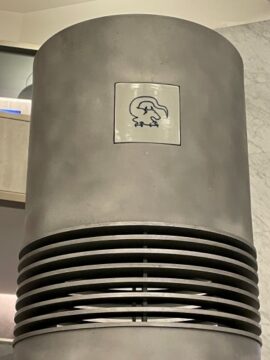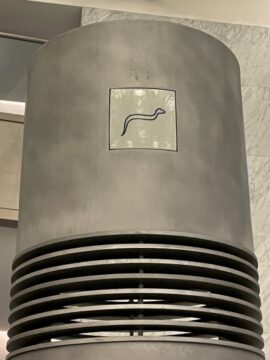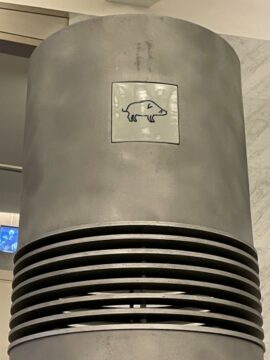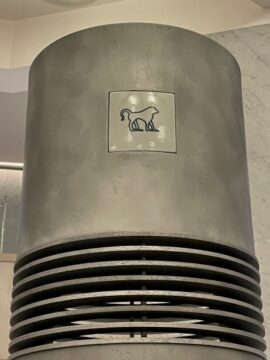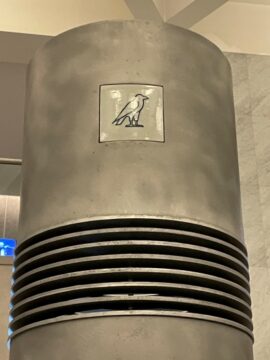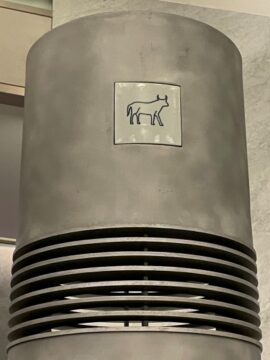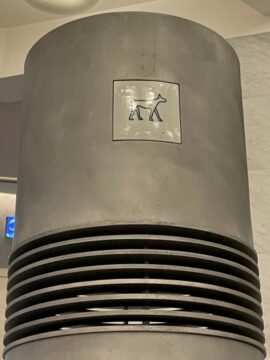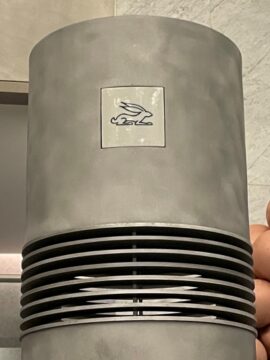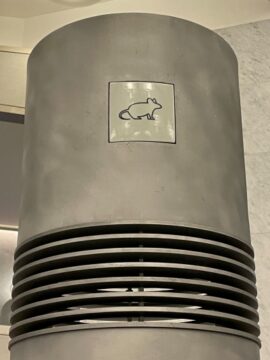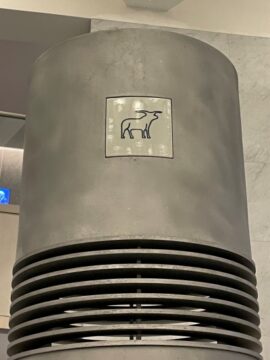Language:Japanese
The Kyoto Concert Hall was completed in 1995. This was the first time in 26 years that I had the opportunity to go inside, since I was given a tour of the facility during the Kyoto City inspection.
It is a design that does not make you feel old even though it has been over 20 years since its completion.

Appearance of Kyoto Concert Hall
The building was designed by Arata Isozaki, an architect who led postmodern architecture.
The black cylindrical outer wall is a large ceramic plate of Shigaraki ware. The outer walls of the cubic lattice foyer are made of a stone called Pietra Serena, which was often used in public buildings during the Renaissance period (15th century) in Florence.
Pietra Serena means “radiant stone”, and because it is a hard stone with fine particles, it is easy to make fine decorations.
This building is made up of three geometrical shapes: a cube that expresses the staff notation, a cylinder with the entrance hall and ensemble hall Murata (small hall), and a cubic grid in the foyer.
The cylindrical building was surrounded by a wide shallow pond that reflected the Christmas-decorated illuminations and architecture.
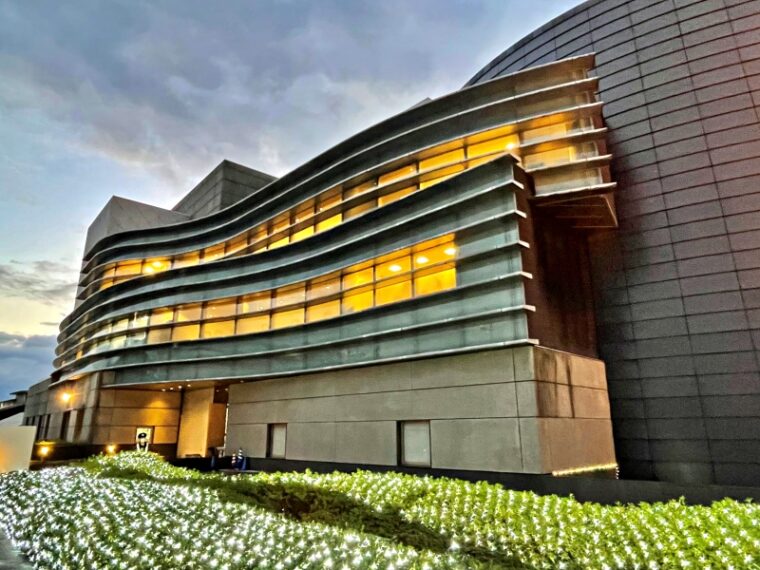
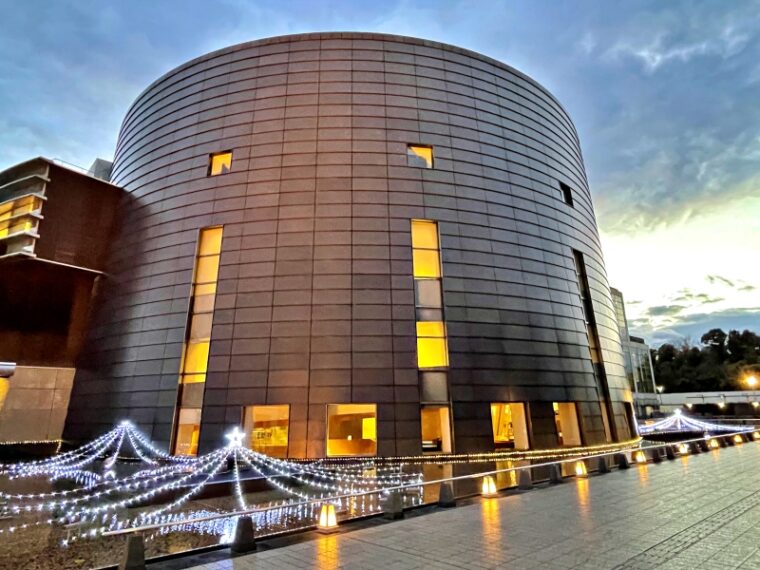
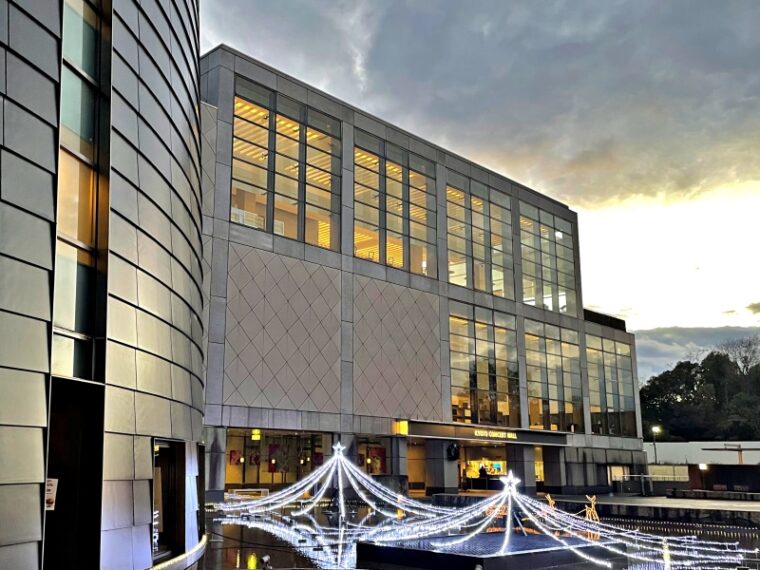
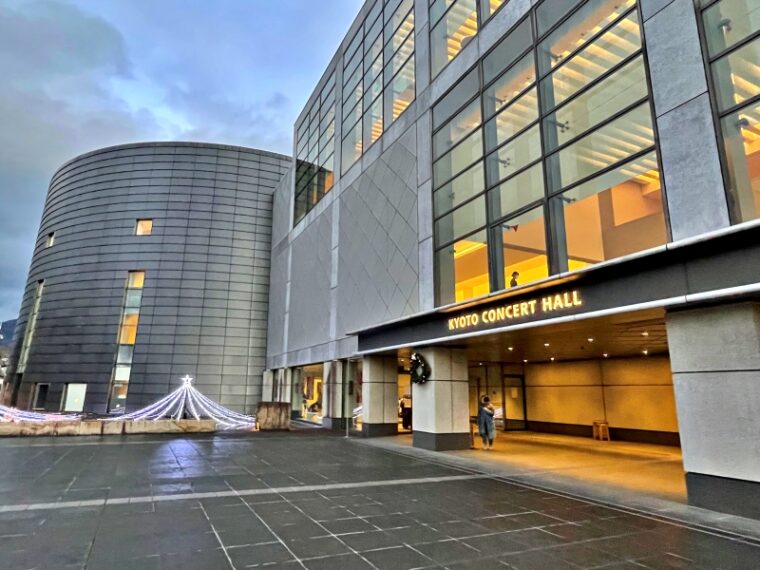
Entrance hall and slope surrounding it
The first thing that catches your eye as you enter the hall is the entrance hall, which makes you feel like you’re in a different space.
The atmosphere is like a modern arrangement of ancient ruins, and the geometric regular design makes you feel comfortable.
The cubic pattern drawn on the floor creates an illusion of steps, and the equilateral triangles on the ceiling and lighting make you feel as if you have encountered a UFO.
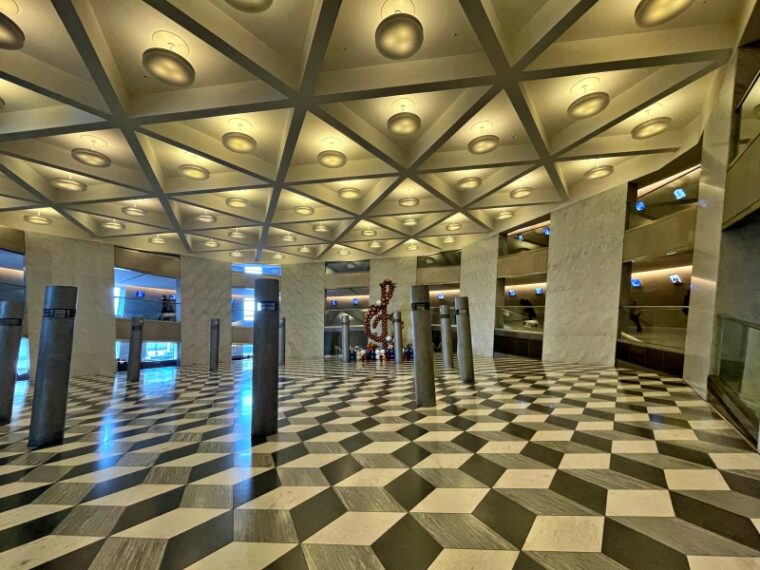
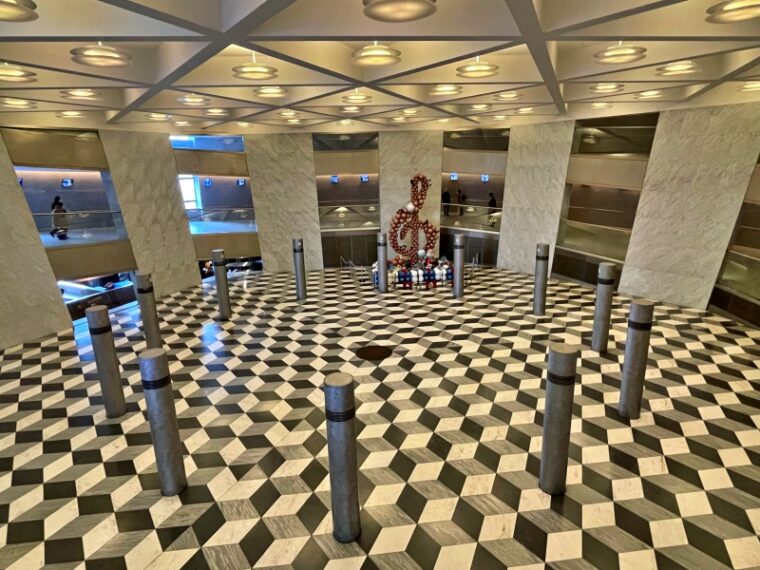
The 12 metal cylinders surrounding the center are about 2 meters high and are inlaid with pictures of the 12 Chinese zodiac signs.
Each of the 12 animals of the Chinese zodiac indicates the direction of the Chinese zodiac, and since it was built to commemorate the 1200th anniversary of the founding of the Heian capital, it may have been built with feng shui in mind.
There is a gentle slope around the entrance hall that leads to the entrance of the music hall, and regular openings overlooking the slanted walls on both sides and the entrance hall.
The scenery changes as you go up, and it feels like you’re walking in a castle, and you feel like you’re in another world.
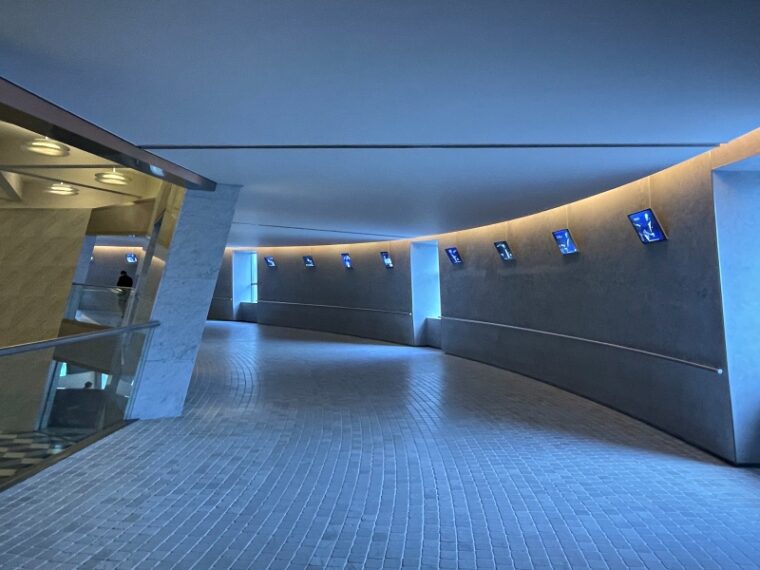

Large hall
There are 3 floors (1st to 3rd floor) with a total of 1833 seats.
The pipe organ (donated by Omron Corporation) installed in the large hall is one of the largest in Japan, and combines the sounds used in French and German music.
It can also produce the sounds of traditional Japanese instruments such as the sho, hichiriki, shinobue, and shakuhachi.
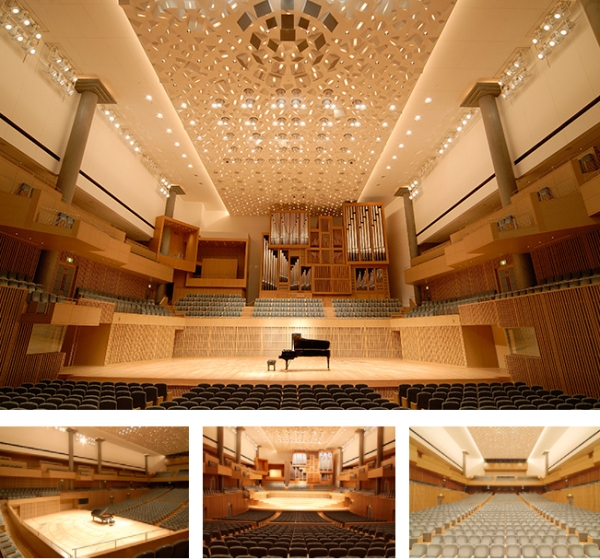
Ensemble Hall Murata (small hall)
The stage size of the small hall is about 15m (width) x about 7m (depth) and is suitable for a small orchestra of about 30 people.
The stage and the audience are close, so you can clearly see the performers’ fingering and breathing, so it’s great for solo concerts.
The stage lighting on the ceiling, reminiscent of a UFO, covers the entire stage, so it seems that you can freely set the overall lighting and the pin spot.
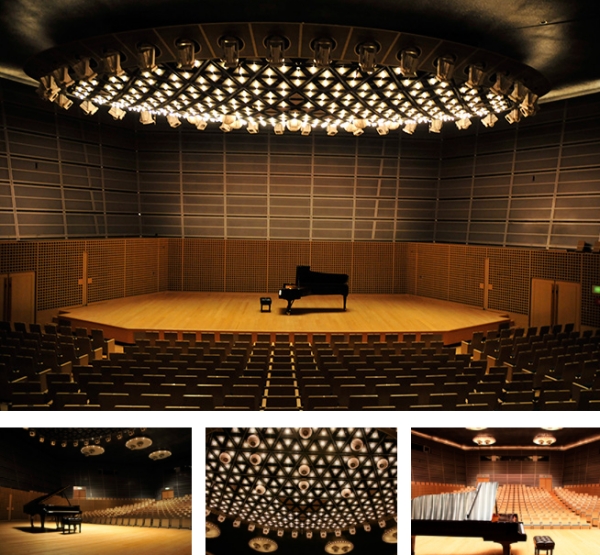
Postscript
The architecture that the architect “Arata Isozaki” was particular about is wonderful, but the sound equipment and lighting equipment for the large and small music halls and stages are also considered.
Sound experts say it’s still a problem, but I think it’s the best sound system.
It’s the season for Christmas concerts. Free admission concerts are also held, so why not go out and listen to the original sound that resonates with your body?
Check the performance calendar ↓↓




